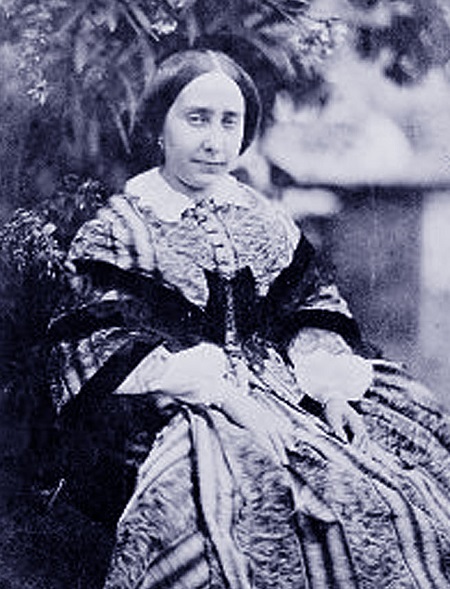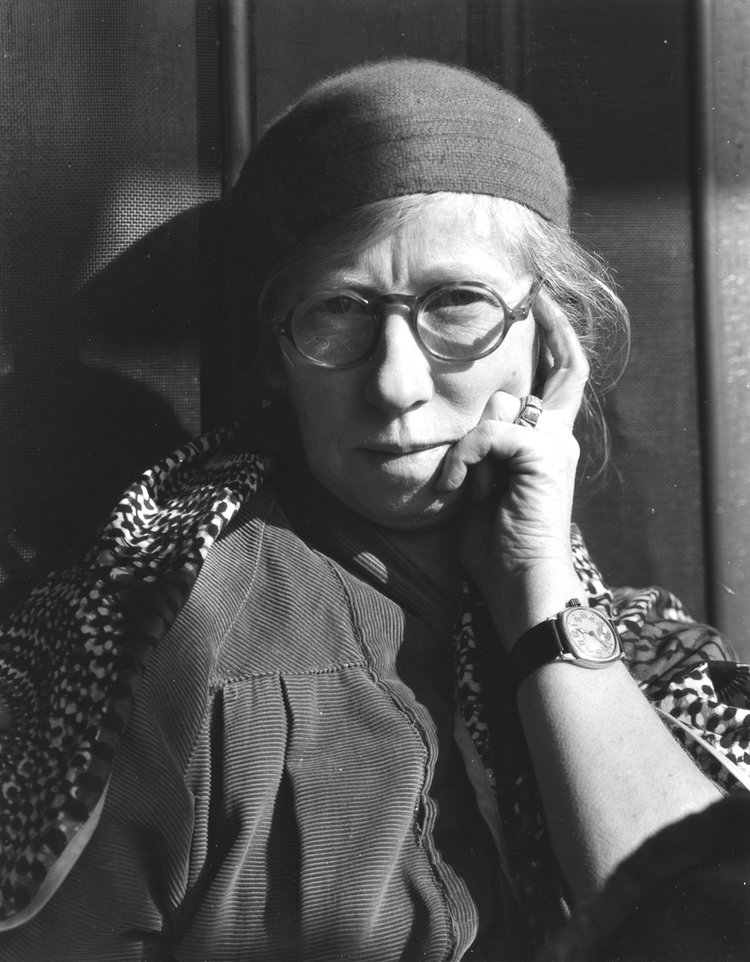
Anna Atkins was an English botanist and photographer. She is often considered the first person to publish a book illustrated with photographic images. Some sources say that she was the first woman to create a photograph.Atkins was born in Tonbridge, Kent, England in 1799. Her mother, Hester Anne Children, "didn't recover from the effects of childbirth" and died in 1800. Anna was close to her father John George Children, a renowned chemist, mineralogist, and zoologist. Anna "received an unusually scientific education for a woman of her time." Her detailed engravings of shells were used to illustrate her father's translation of Lamarck's Genera of Shells. John George Children and John Pelly Atkins were friends of William Henry Fox Talbot. Anna Atkins learned directly from Talbot about two of his inventions related to photography: the "photogenic drawing" technique (in which an object is placed on light-sensitized paper and exposed to the sun to produce an image) and calotypes. Atkins was known to have had access to a camera by 1841. Some sources say that Atkins was the first female photographer, while others attribute this title to Constance Fox Talbot. As no camera-based photographs by Anna Atkins, nor photographs by Constance Talbot, survive, the issue may never be resolved.

Julia Margaret Cameron was a British photographer who is considered one of the most important portraitists of the 19th century. She is known for her soft-focus close-ups of famous Victorian men and for illustrative images depicting characters from mythology, Christianity, and literature. She also produced sensitive portraits of women and children. After establishing herself first among Calcutta's Anglo-Indian upper-class and then among London's cultural elite, Cameron formed her own salon frequented by distinguished Victorians at the seaside village of Freshwater, Isle of Wight. After showing a keen interest in photography for many years, Cameron took up the practice at the relatively late age of 48, after her daughter gave her a camera as a present. She quickly produced a large body of work capturing the genius, beauty, and innocence of the men, women, and children who visited her studio at Freshwater, and created unique allegorical images inspired by tableaux vivants, theatre, 15th-century Italian painters, and the work of her creative contemporaries. Her photography career was short but productive; she made around 900 photographs over a 12-year period. Cameron's work was contentious in her own time. Critics derided her softly focused and unrefined images, and considered her illustrative photographs amateurish and hammy. However, her portraits of respected men (such as Henry Taylor, Charles Darwin, and Sir John Herschel) have been consistently praised, both in her own life and in reviews of her work since. Her images have been described as "extraordinarily powerful" and "wholly original", and she has been credited with producing the first close-ups in the history of the medium.

Imogen Cunningham was an American photographer known for her botanical photography, nudes, and industrial landscapes. Cunningham was a member of the California-based Group f/64, known for its dedication to the sharp-focus rendition of simple subjects. After graduating from college in 1907, Cunningham went to work for Edward S. Curtis in his Seattle studio, gaining knowledge about the portrait business and practical photography. Cunningham worked for Curtis on his project of documenting American Indian tribes for the book The North American Indian, which was published in twenty volumes between 1907 and 1930. Cunningham learned the technique of platinum printing under Curtis's supervision and became fascinated by the process. In Seattle, Cunningham opened a studio and later won acclaim for portraiture and pictorial work. Most of her studio work of this time consisted of sitters in their own homes, in her living room, or in the woods surrounding her cottage. At one point she and her husband Roi Partridge, a Seattle artist and print maker, climbed up to the Alpine wild flower fields on Mt. Rainier where Roi posed nude as a mystical woodland faun. Her images were shown by the Seattle Fine Arts Society and were later published in the Seattle newspaper the Town Crier, where they caused a scandal due to a woman photographing a male nude. One critic wrote that her work was vulgar and charged her with being an immoral woman, but Cunningham stated that, "It didn't make a single bit of difference in my business. Nobody thought worse of me." Cunningham didn't revisit those photographs for another fifty-five years.